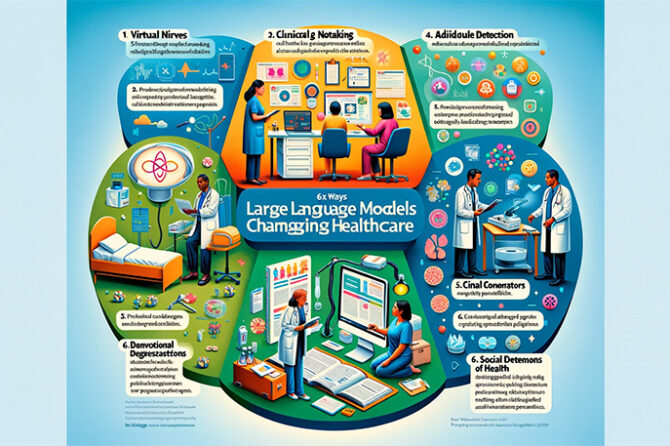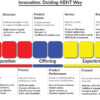
In the rapidly evolving world of healthcare, the advent of artificial intelligence (AI) and, more specifically, Large Language Models (LLMs), is heralding a new era of innovation and efficiency. The article “Six Ways Large Language Models are Changing Healthcare” by Paul Webster in Nature Medicine provides a compelling overview of how these advanced AI tools are transforming the healthcare landscape. With insights from six leading AI researchers, the article delves into the multifaceted impacts of LLM-powered chatbots and AI systems, ranging from virtual nursing and clinical note-taking to advanced diagnostic capabilities and understanding of social determinants in health. As we stand on the cusp of a significant shift in medical care and management, this piece offers a glimpse into a future where AI not only complements but also enhances the capabilities of healthcare professionals, promising improved patient outcomes and a revolution in medical practices.
The article by Paul Webster in Nature Medicine discusses how Large Language Models (LLMs) are making significant impacts in healthcare, specifically highlighting six areas:
- Virtual Nurses:
Munjal Shah, CEO of Hippocratic AI, emphasizes the role of LLMs in managing chronic care, addressing the shortage of nurses. These virtual nurses can handle tasks like medication reminders, scheduling appointments, and navigating care-access issues without being involved in clinical diagnosis. Hippocratic AI is also conducting trials to ensure safety and effectiveness.
2. Clinical Note-Taking:
David Bates, a professor at Harvard Medical School, notes the potential of LLMs in reducing clinicians’ administrative burden. LLMs can help categorize emails, check in with patients, and write notes, making care faster. Oracle Computer is developing a Clinical Digital Assistant for such tasks, expected to be available by the end of 2024.
3. Adverse-Event Detection:
Vivek Rudrapatna, a gastroenterologist at UCSF, is working on using LLMs for detecting adverse events from clinical notes. This includes automating the redaction of protected health information and extracting serious adverse events, which could enhance drug safety surveillance.
4. Predicting Cancer Metastasis:
Amber Simpson, from Queens University, describes using LLMs to predict metastatic cancer and assist in treatment strategies. This approach is already in clinical use, aiding in precision medicine by predicting treatment pathways based on large-scale data analysis.
5. Social Determinants of Health:
Maxim Topaz from Columbia University is refining LLMs to provide information on social health determinants. This includes identifying patients lacking social support using algorithms that analyze electronic clinical notes. This approach could be applied in various healthcare fields.
6. Conversational AI Diagnostics:
Greg Corrado of Google AI sees the future integration of LLMs in medical imaging, enhancing diagnostic accuracy. This involves creating conversational AI systems that can interact with clinicians, analyze images, and assist in drafting reports.
Overall, the article suggests that LLMs are on the verge of revolutionising healthcare by improving efficiency, enhancing precision in treatment, and providing critical support in patient care and administrative tasks.
Prof. Dr. Prahlada N. B
05 January 2024
Chitradurga.

















Leave a reply